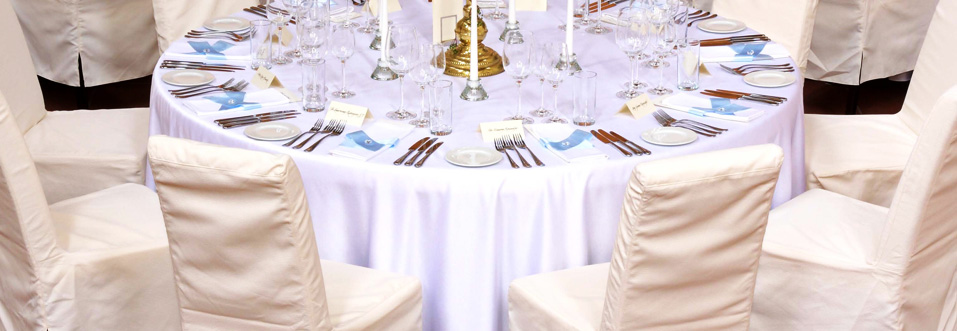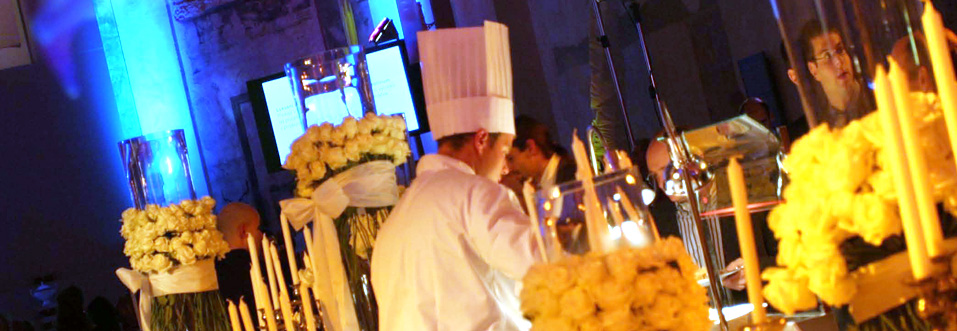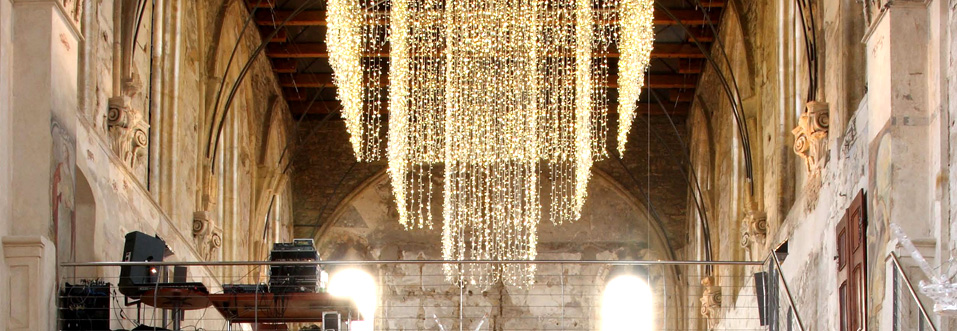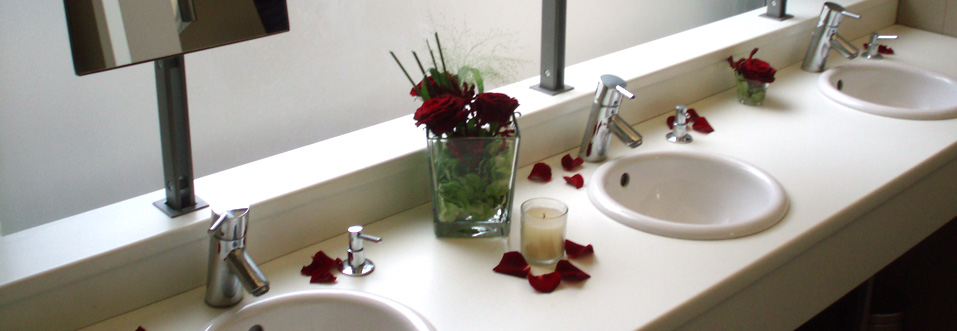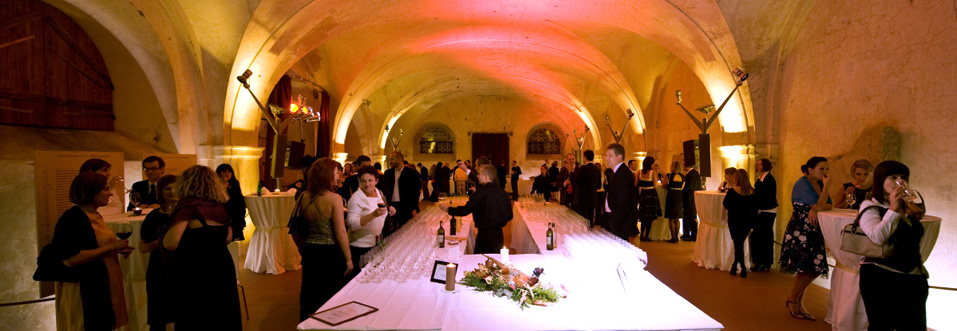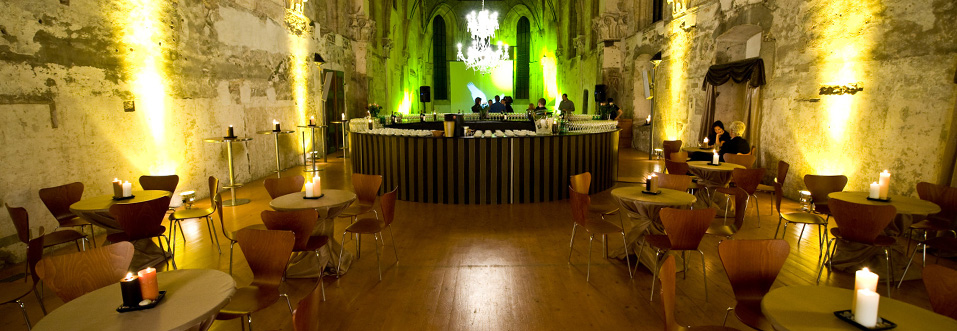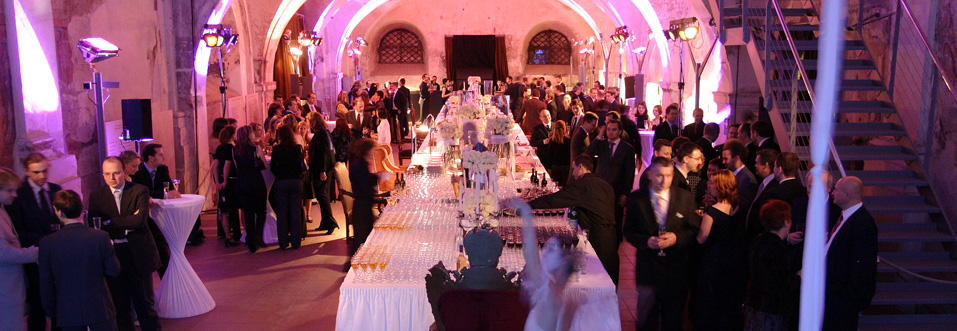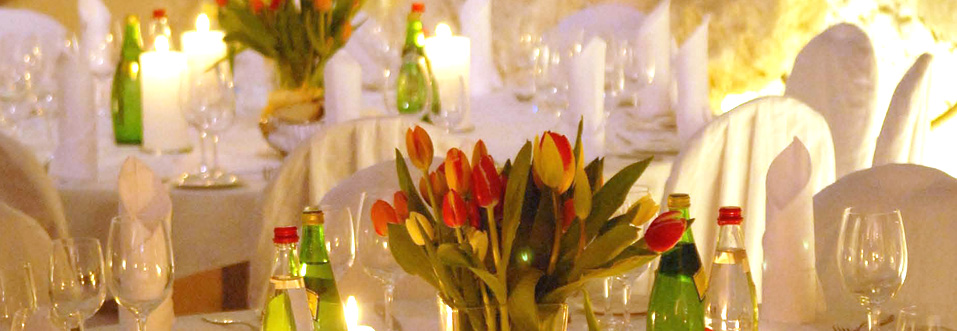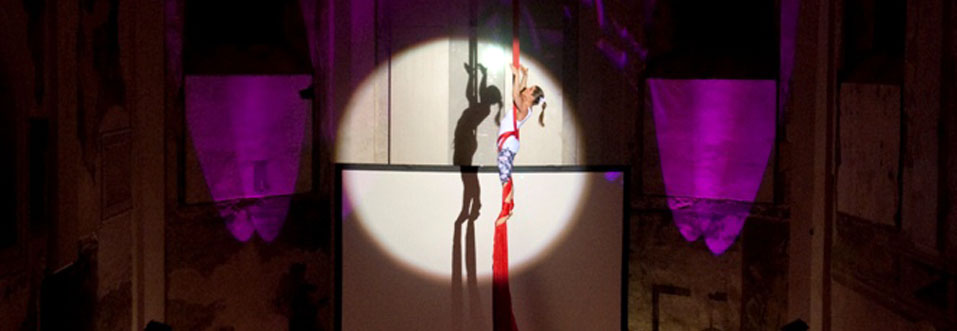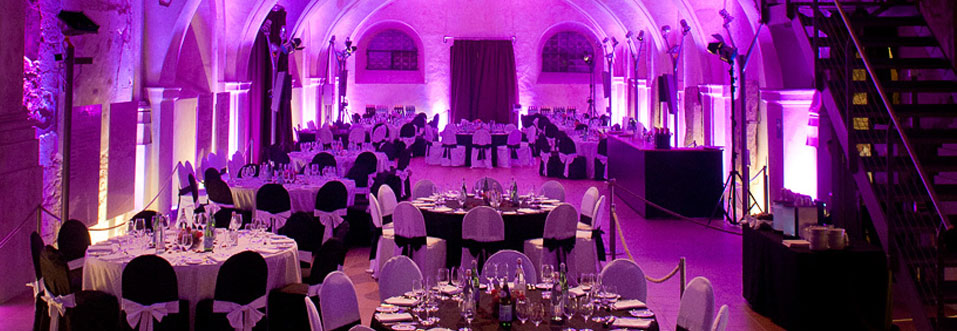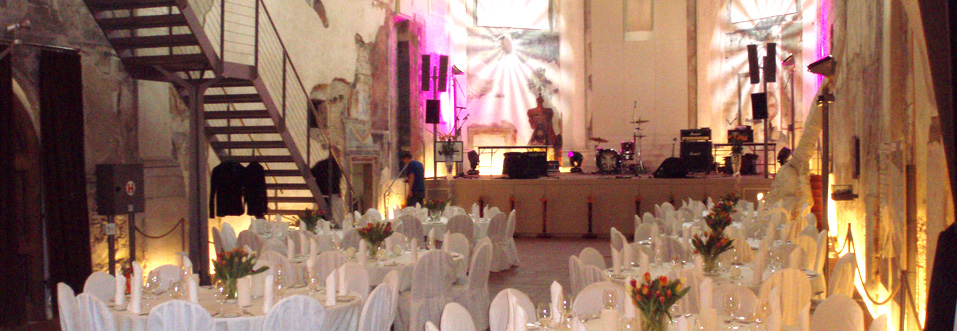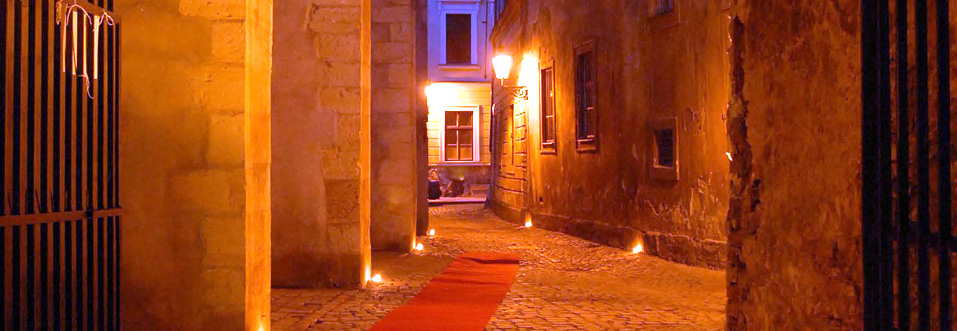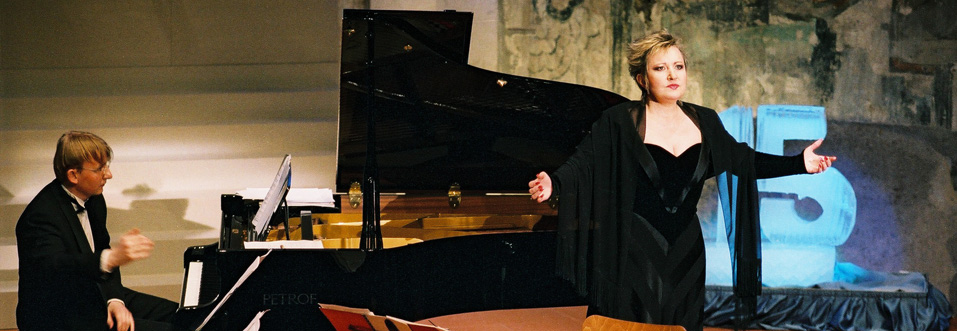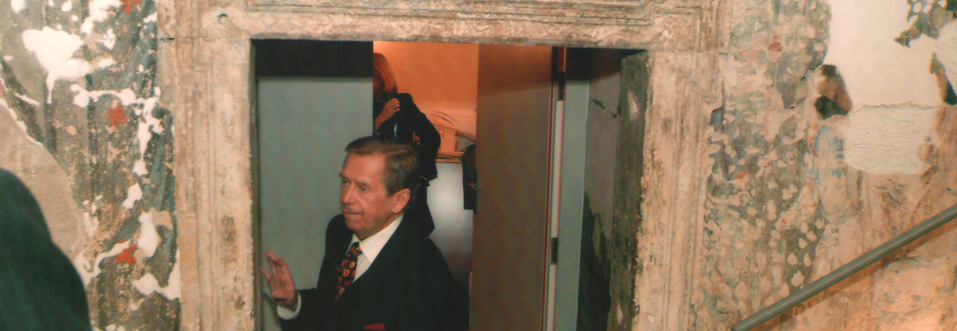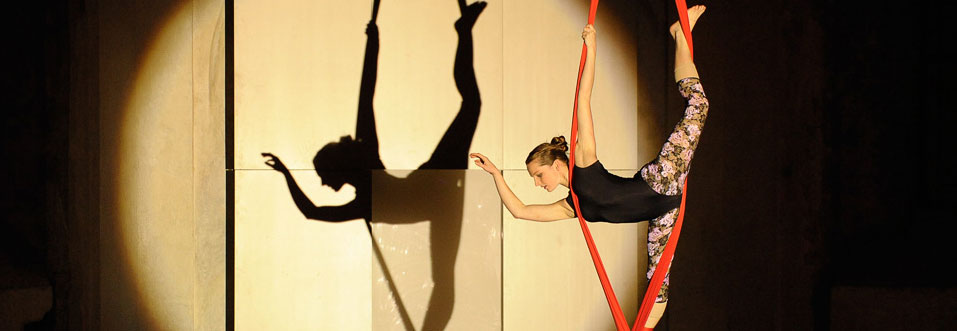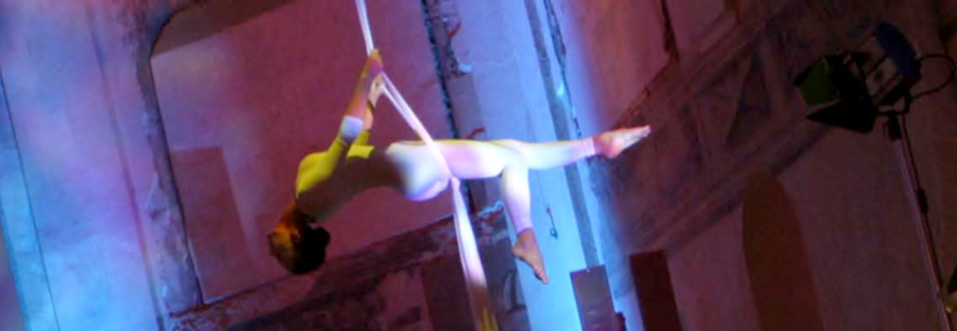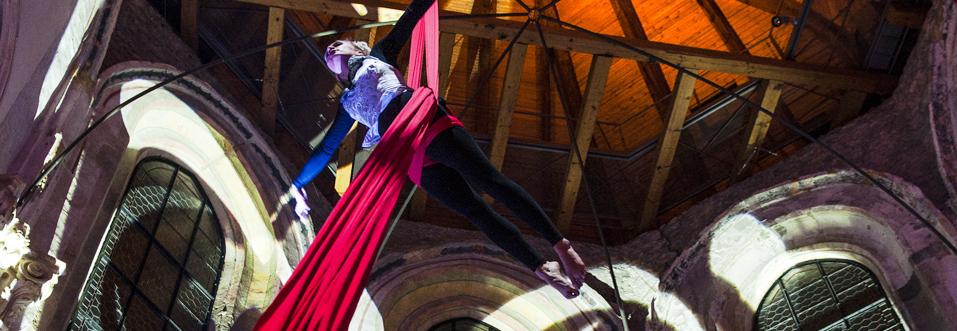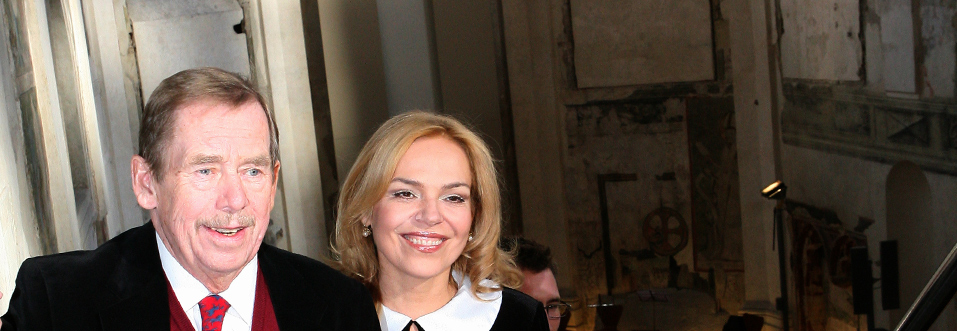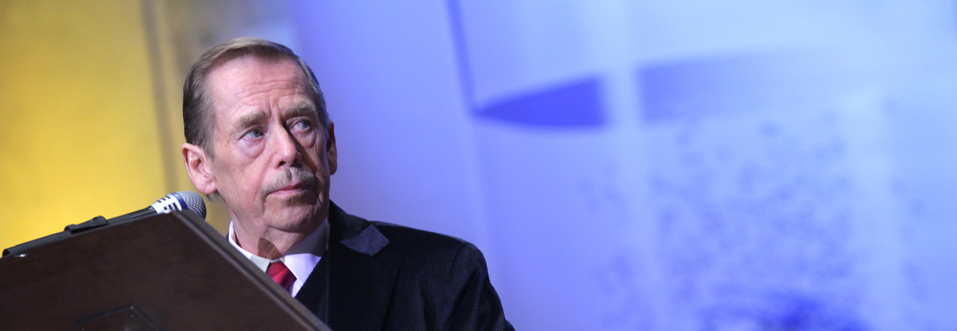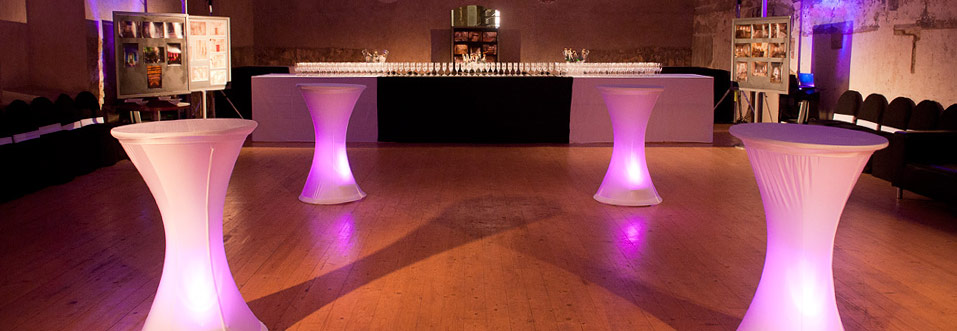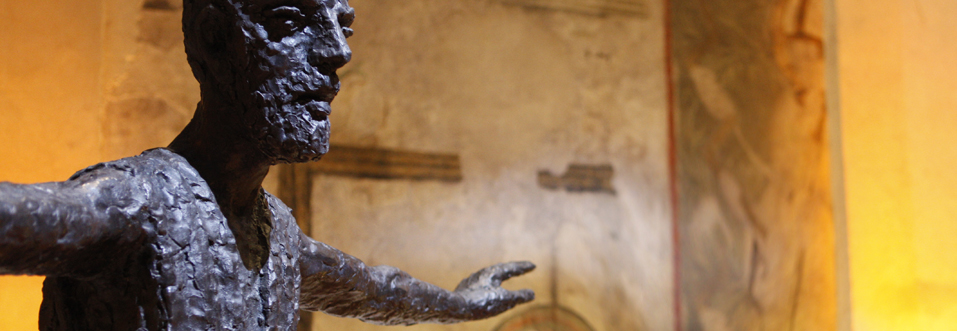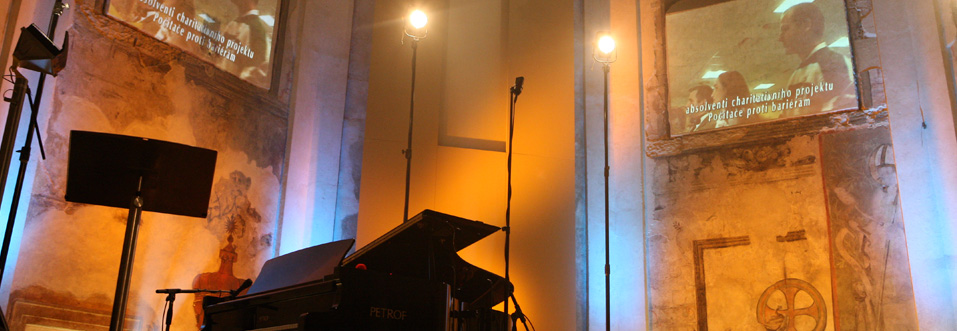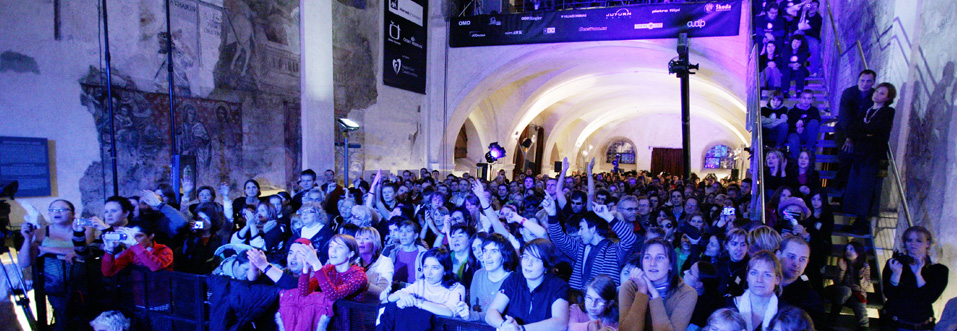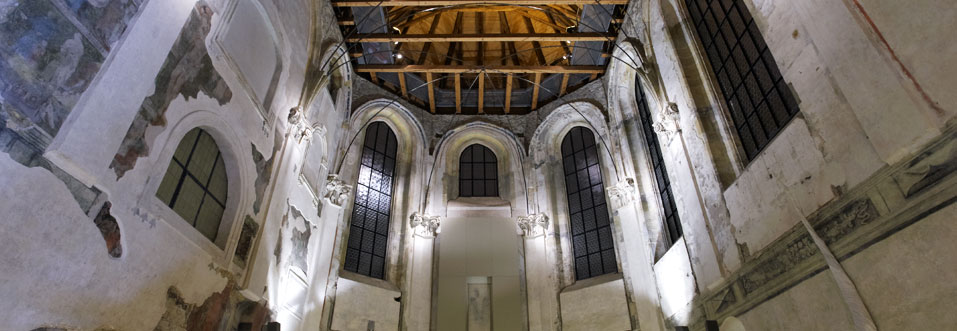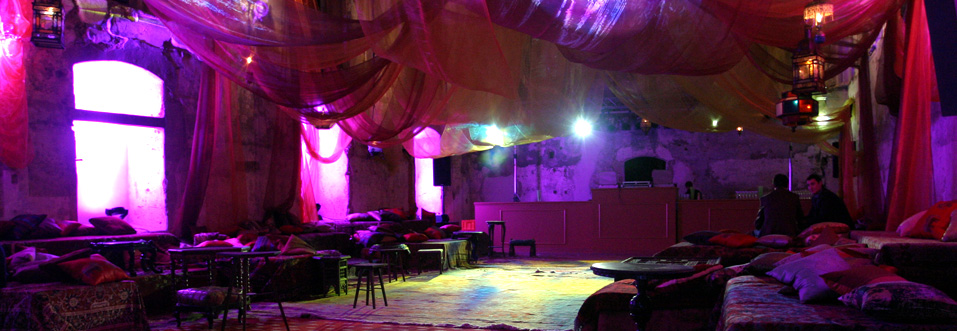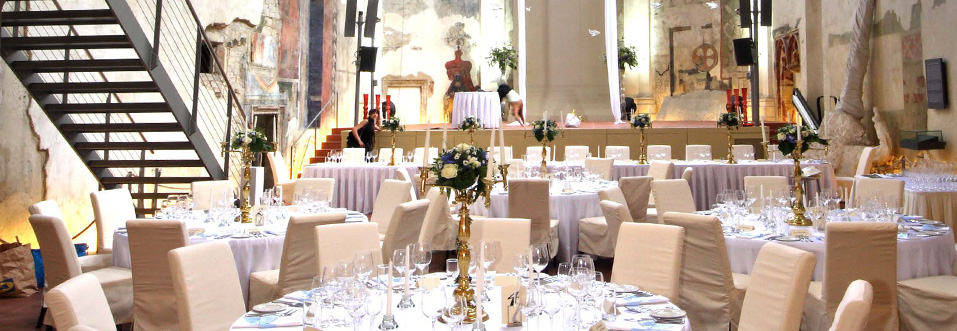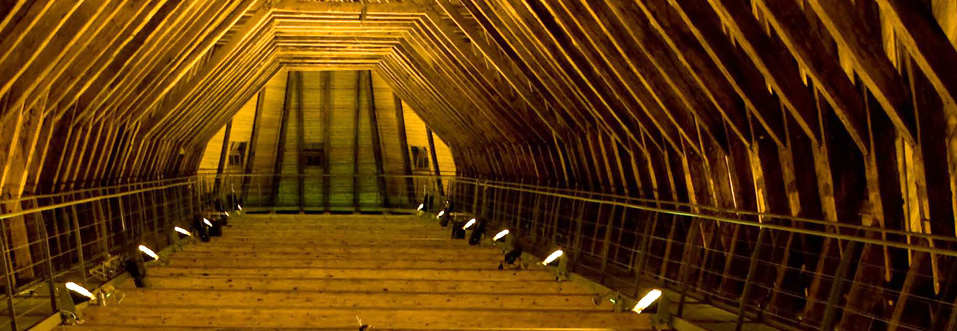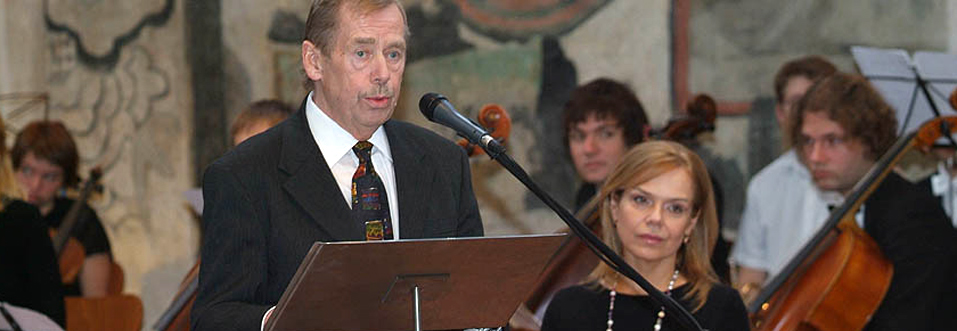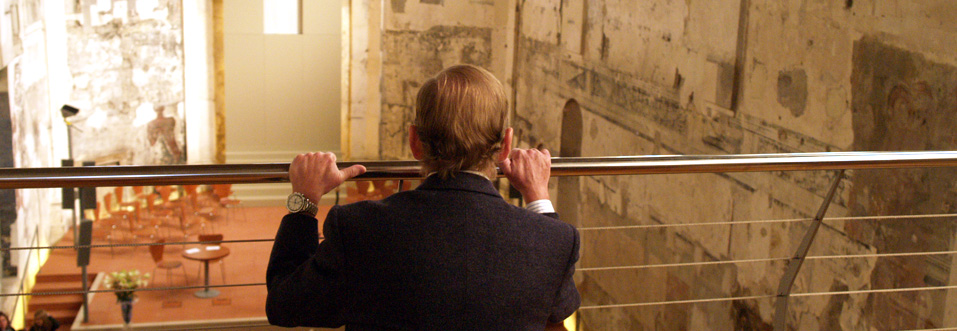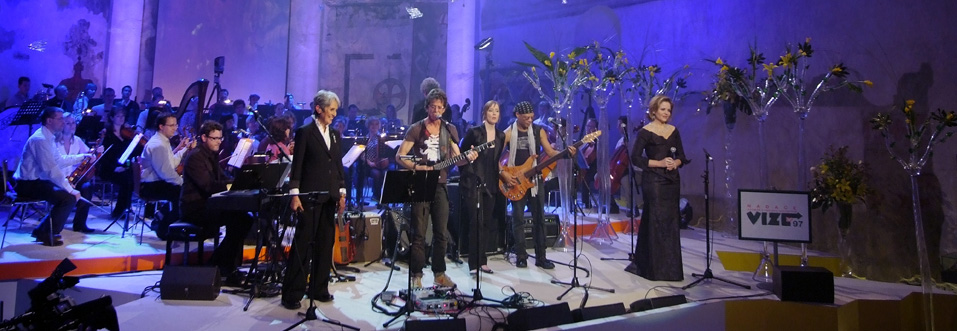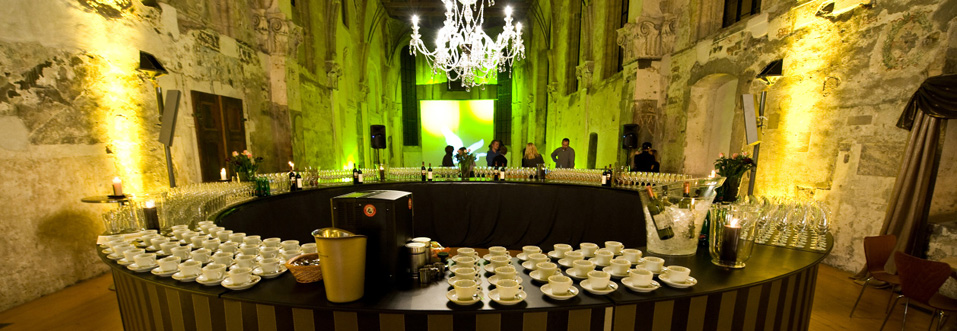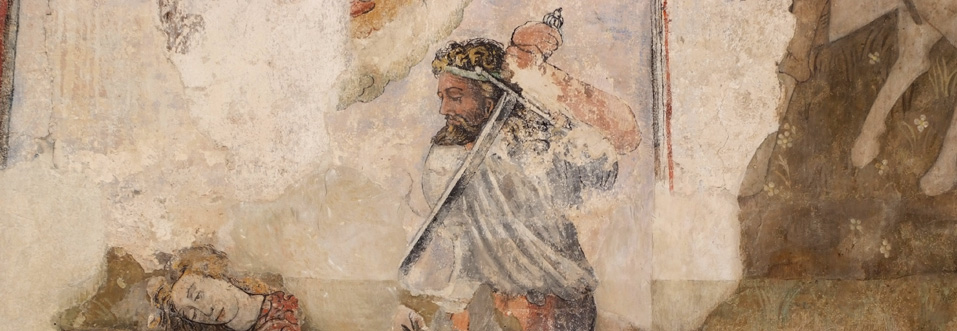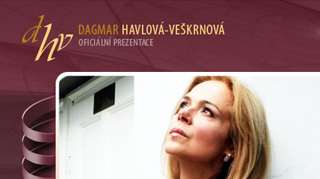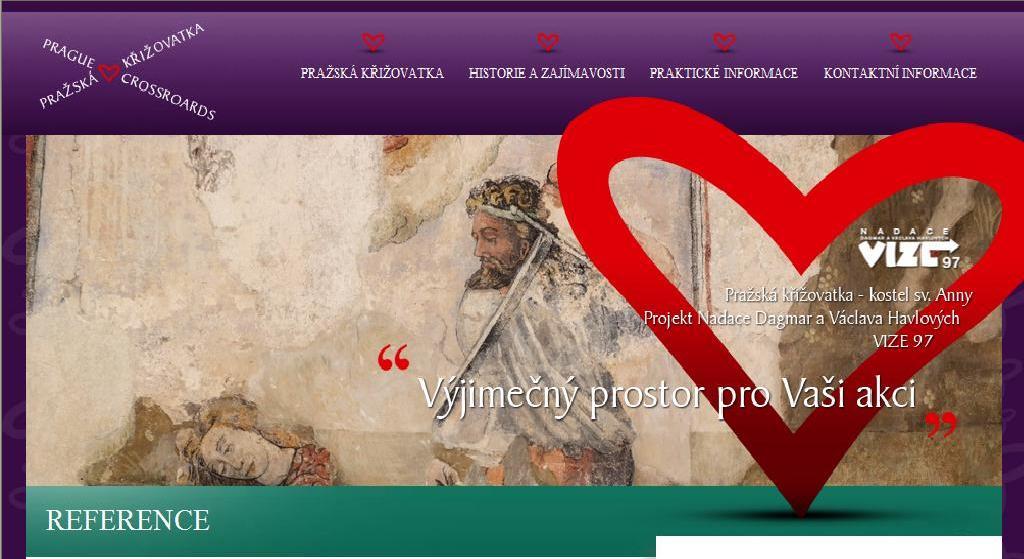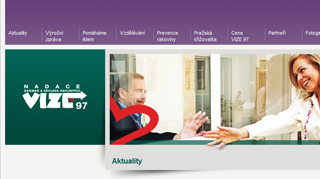The 14th-century Gothic church is now situated in the middle of the former Baroque convent that is currently used by the National Theatre as an operational and technical building.
It stands on the spot of the 12th-century Romanesque Rotunda of St Lawrence. In the third decade of the 13th century the Knights Templar established themselves here. They demolished the apse of the rotunda and added to the circular nave a rectangular chancel that narrowed to the east and also ended in an apse. To the north of the church they erected residences and outbuildings of the commandry – the main headquarters of the order in Bohemia. When the Order of Knights Templar was disbanded in 1312 the Order of St John bought the site, including the Church of St Lawrence, selling it in 1313 to the Dominicans from the monastery of St Anne at Újezd. The development of the monastery was supported by King John the Blind and Queen Elizabeth of Bohemia, but the main benefactors were the lords of Říčany, whose seat was nearby. Two vaulting bosses from the church, now housed in the lapidarium of the National Museum, bear the arms of their donors: three waterlily leaves (the lords of Říčany) and the Bohemian lion (the royal endowment). The convent was administered by the Dominicans from the nearby monastery of St Clement.
The Dominican Gothic church was built in several stages between 1313 and the mid-1370s. When it was completed the convent church of the Dominican nuns became one of the most significant new buildings of mendicant architecture in the Old Town of Prague. Its external appearance was that of a narrow single-naved structure, supported by a dense row of buttresses on either side and with wide windows with tracery (not preserved), and a high, steep roof, topped by an eight-sided turret in the axis of the west front. The buildings of the convent lay to the north of the church. The long, narrow and lofty interior was capped by a barrel vault with lancets above the windows. Its ribs were underpinned high beneath the vault by forked corbels on typical pedestals. The the nuns’ gallery occupied the nave, so only in the chancel did the monumental height of the space come into its own and the bare surfaces of the walls could be used for paintings, executed by masters from the courtly circle. Evidence of their exceptional standard and of many overpaintings is provided by fragments, which continue to be revealed and gradually restored. Their preservation will be as valuable a contribution to understanding the spiritual life and importance of this women’s convent from the 14th to the 18th century as was the recent rehabilitation of the architecture of St Anne’s Church.
Post-Hussite-War History
St Anne’s Church was the only Prague church to have been unaffected by the Hussite Wars. In 1553 the chronicler Václav Hájek of Libočany was interred here. In the 17th century repair work and reconstruction focused on the convent, although in 1676 the nuns’ chancel was rebuilt and in 1727 the stucco decoration of the interior was completed: piers with voluted capitals were erected beneath the Gothic corbels. The tops of the Gothic windows were rounded by a thin infill, chambranle were added to the west front and the wall of the west front, including the turrets were decorated with piers with voluted capitals. The convent was closed in 1779 and in 1816 printing house was established here by Johann Ferdinand von Schönfeld who published the Imperial and Royal post newspaper. The interior of the church, which served as a paper warehouse, was divided up by the insertion of wooden floors. During the years 1880–1884 the three upper storeys of the tower were demolished and the Gothic vaulting was torn down. The eastern part of the ground floor was first cleared for archeological research in 1956. From the 1970s, occasional repairs were made to the external walls and the roofs. At the beginning of the new millennium the rehabilitation of the interior was commenced on the basis of a scheme devised by the architect Eva Jiřičná: a removable light metal structure recalls the former Gothic vaulting by copying its shape and the course of its ribs. In this way visitors are provided with a view of the original Gothic roof (the tie beams and the wall beams are the product of preservation work from the turn of the 1990s).
In the chancel remnants of the wall paintings executed soon after the completion of the original church have been preserved including parts of three large compositions depicting the Seven Sacraments, The Adoration of the Magi and a Lamentation of Christ
The Lamentation of Christ is regarded by art-historical literature as the outstanding example of the painting remnants in the chancel as it demonstrates close links to the Passion paintings of the Master of the Třeboň Altar.
(text by Klára Benešovská)

